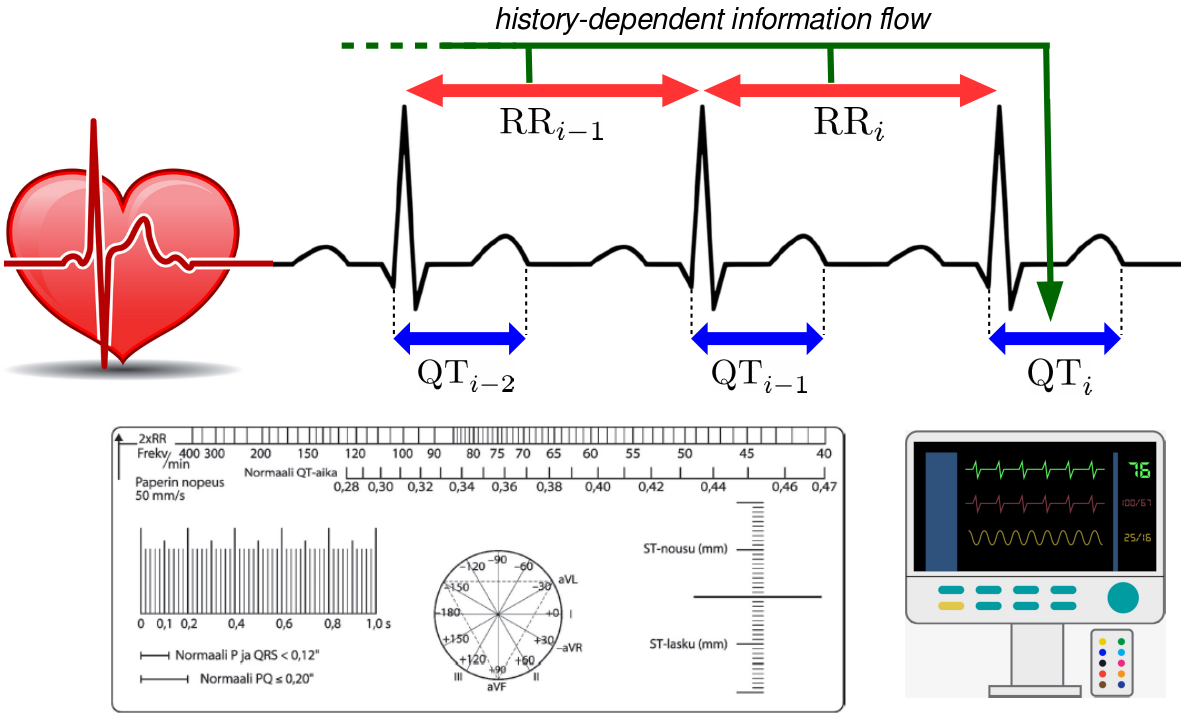Modern methods of computational physics reveal the asymmetry between
electrical and muscular activities of the heart. These findings facilitate
the stratification of patients with severe cardiac arrhythmias.
The study was carried out at the Laboratory of Physics at TUT, in the
Quantum Control and Dynamics research group led by Prof. Esa Räsänen
in the Computational Physics Unit. The project was carried out by
Dr. Ilya Potapov in collaboration with Räsänen, Jiyeong Kim, Joonas Latukka,
and Perttu Luukko, as well as cardiologist, Prof. Katriina Aalto-Setälä
from Tampere University Hospital.
The human heart is a unique organ combining electrical conductivity
(as in neurons of the brain) and muscular contraction (as in normal
human muscles) in order to pump blood through the human body. It was
long hypothesized that the electrical properties depend on the heart
rate. Hence, it becomes difficult to detect electrical
dysfunctions, e.g. arrhythmia, as the electrical properties change
from patient to patient depending on their heart rate. Therefore,
correction methods are needed to standardize the properties according to
the physiological state of the patient.
In 1920, two prominent cardiologists Henry Cuthbert Bazett and Louis
Sigurd Fridericia proposed simple correction formulas, destined to
stay up to this day in medical practice with nearly legendary vigor.
“These two formulas have been around for almost hundred years up to
this date, even though they have been constantly criticized in
cardiological research. However, cardiologists have learned to
apply and interpret the formulas and their results based on their
medical insight and experience”, Dr. Potapov says.
After applying the so-called transfer entropy concept in the field
of information theory and computational physics, the researchers at
TUT were able to precisely determine, how much and what kind of information
flows from the electrical to muscular activity of the heart and vice
versa. They were able to confirm and, moreover, quantify how the electrical
activity follows the heart rate. This quantification will further
facilitate the correction of the electrical activity of the heart with
a new precision. This enables, for example, a precise determination
of the clinically very important QT interval in the electrocardiogram.
“It seems unfair for young cardiologists to be facing a potential
patient and not knowing how to correct the results according to the
biases of the standard formulas. It is even more unfair for the
patient. In the future, we hope to see objective and precise
correction methods based on the tools developed in this study”,
resumes Prof. Räsänen.
The study was published in Scientific Reports (Nature Publishing Group) on October 9, 2018.
Link: https://www.nature.com/articles/s41598-018-33359-1

